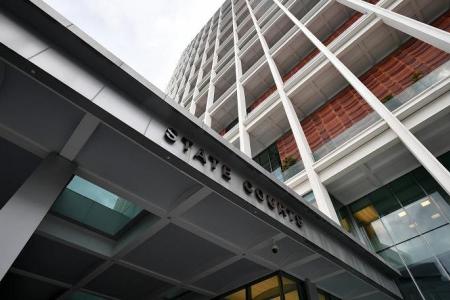Construction manager’s death by plywood fragment ruled work-related misadventure
Seven days after being hit by a fragment of plywood that was flung for 26 metres following a pile driving analysis test, an assistant construction manager succumbed to his injuries and died in hospital.
Last Friday, State Coroner Adam Nakhoda ruled that Mr Yap Ee Guan’s death on July 13, 2022 was a work-related misadventure.
Ruling out foul play, the coroner said he wholeheartedly endorsed recommendations made by the Workplace Health and Safety Council following the accident, which included that stakeholders use camera technology to observe the pile driving analysis test which would allow them to be stationed at a much further distance.
According to the coroner’s report, Mr Yap was working for Takenaka Corporation. He had been deployed to a worksite at Pasir Ris Industrial Drive 1 since July 1, 2022, where two fabrication blocks, an office block, and four blocks of ancillary facilities were being constructed.
Takenaka had contracted BBR Piling to carry out piling works, and the latter firm was required to carry out pile tests.
On July 6, 2022, Mr Yap had been present at the worksite to witness the pile driving analysis test - one that is used to evaluate the integrity of piles.
As part of the test, a hammer is released from a height to fall on a pile, upon which plywood can be placed to cushion the pile from the impact and prevent damage to it.
After the hammer was dropped during the test that day, the plywood shattered and a large triangular fragment of plywood, measuring 73cm by 57cm, flew to the rest area, 26 metres away.
“I found that the fragment of plywood that was flung away from the test was a large fragment and could have posed a danger to multiple people had they been in its flight path,” said State Coroner Nakhoda.
The fragment hit Mr Yap’s face and head, inflicting what the coroner described as devastating injuries.
Mr Yap was bleeding from this face, and despite being conscious was unable to open his eyes.
He was taken by ambulance to Changi General Hospital where he underwent surgery.
He suffered bleeding on the surface of his brain, fracture to one of his eye sockets, and ruptures to both his eyes.
Despite the surgery and treatment to manage his injuries, his condition worsened.
His family was told that further surgery could happen, but that it came with risks and might not improve the condition inside his brain.
A decision was made to take him off life support. Mr Yap died on July 13, 2022.
State Coroner Nakhoda found that during the test, the risk assessment and safe work procedure control measures of demarcating the hammer drop area and barricading the test area had not been adhered to.
But he said that even if this was done, it would not necessarily have prevented the accident as the barricades were meant to keep personnel out of the test area and were not intended to stop fragments from the test flying out of the area.
The coroner also noted that the thickness of the piece of plywood was greater than required in BBR’s document for the correct procedures, safety precautions and work requirements of the project.
However, he said that it had not been established whether the increased thickness of the plywood would have contributed to it shattering and a large fragment being expelled explosively.
State Coroner Nakhoda said he accepted the Ministry of Manpower’s lead investigator’s evidence that the accident was an unexpected occurrence, adding that none of the personnel that the investigator interviewed had reported seeing a fragment of plywood traverse such a distance following a test.
“Usually, if the plywood shattered during the test, the broken piece would fall next to the bored pile and not be explosively shot out as it was in this case,” he said.
The coroner urged stakeholders to implement other safety measures to ensure accidents of this nature are not repeated.
He said: “Shatter-proof cushioning material would significantly reduce the chance of a similar accident. If such cushioning materials are not available, then the test area should be surrounded with barricades, such as Perspex sheets, that can contain any fragments expelled following the test.
“A pile drive cap could also have been placed over the pile to, similarly, contain the risk of fragments being expelled.”
Get The New Paper on your phone with the free TNP app. Download from the Apple App Store or Google Play Store now


